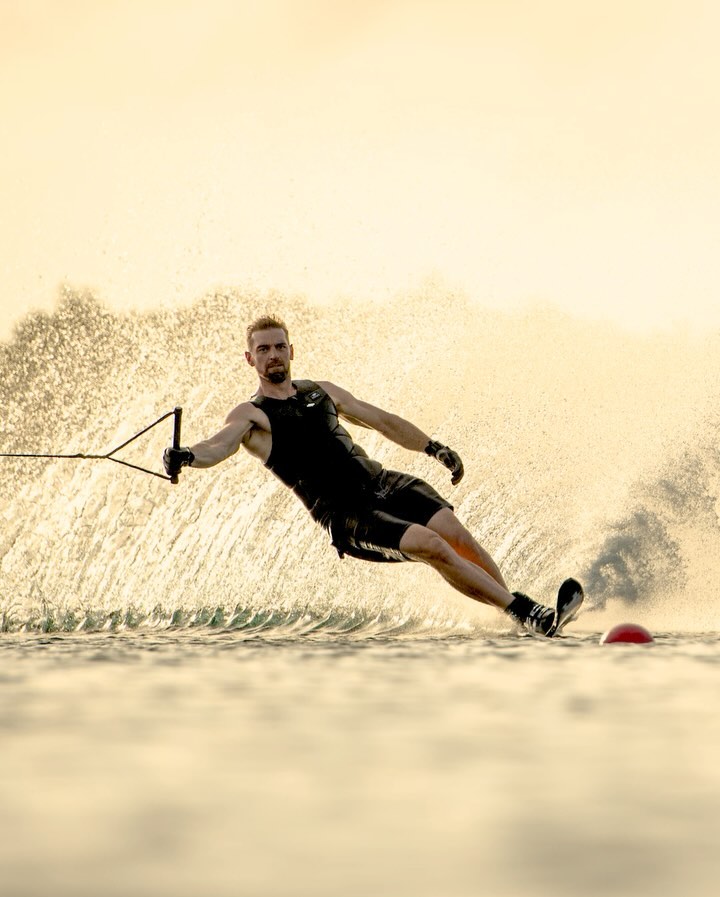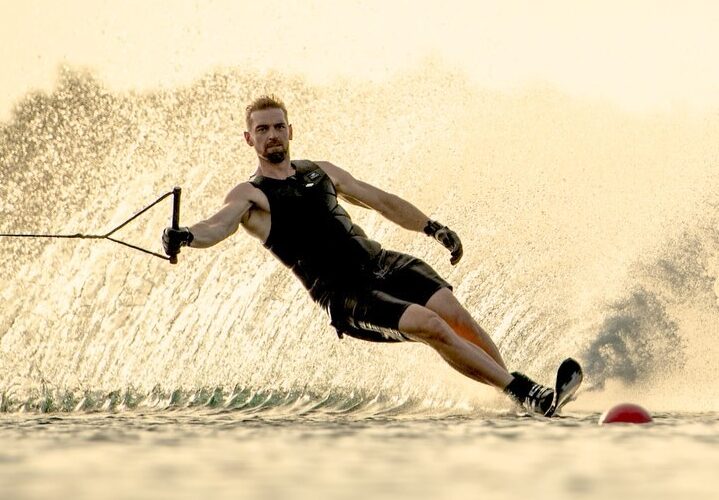The relentless reinvention of Will Asher

Image: @jmommer2
By Jack Burden
In the early morning glass of a Florida lake, Will Asher slices the slalom course like a man trying to solve a riddle only he can hear. At 42, he shouldn’t be this vigorous. But this ride isn’t just about winning—it’s about understanding.
That understanding, it turns out, might be the only thing keeping him going.
In a season that was supposed to mark the rise of the next generation, it was the old master who stood tallest. Asher, already a two-time world champion and one of the most decorated slalom skiers of all time, didn’t just show up in 2024—he took over. Four professional wins, more than double the next closest competitor. A three-stop sweep through Morocco, the south of France, and Monaco, where he ran 10.25 meters (41’ off) not once, but twice. Against men half his age, Will Asher was untouchable.
Ask what changed, and he doesn’t talk about dominance—he talks about freedom.
“We made a breakthrough [with my equipment],” he said in a recent episode of the FPM Podcast with Marcus Brown. “And when you get to that point, you’re able to just switch off.”
There’s a calmness to Asher now—a kind of peace forged not by slowing down, but by refining his purpose. In a sport where most of his contemporaries have long since moved on, he’s still here. Still evolving. Still building.
Charting a New Course
What do you do when you’ve won almost everything? For Asher, the answer wasn’t to walk away. It was to go deeper.
Ski design—once a curiosity, now an obsession—has become his new frontier. His latest creation, the Syndicate Works 01, isn’t just a ski. It’s the result of a decade-long search for feel, feedback, and flow. A physical manifestation of everything he’s learned—and everything he still doesn’t know.
For Asher, it’s not about tournament wins anymore. It’s about chasing the perfect feel.
And it’s not just about his performance. It’s about the craft. The satisfaction of building something that matters.
“It’s like my babies,” he says. “Thousands of my children out there that people are trying to experience. And it does feel good when people say, ‘That changed my life.’ That’s their release. Their enjoyment. Their pleasure.”
This isn’t legacy-building. It’s presence. Pride. Passion shared.
Asher often speaks of skiing as more than sport. It’s structure. It’s meaning. A daily ritual that gives shape to life.
“Yeah,” he says, when asked if skiing brings purpose. “It keeps me on the straight and narrow. Keeps me motivated. Gets me up in the morning. Makes me go to bed. Make good decisions… most of the time.”
But underneath the laugh is something harder. At 42, he knows his competitive days are numbered. And he’s honest about what comes next.
“Essentially a piece of me is going to die,” he says. “We don’t see the timer, but we know there’s a timer. [Maybe] this year, maybe next year, it could happen next week.”
Then, more quietly: “And when people put their whole life into one thing and it suddenly goes away—it’s full of depression and anxiety. You’ve got to fill that hole, right?”
That’s the part athletes don’t talk about. The collapse waiting just off-stage. The slow erasure of identity. For Asher, the antidote isn’t legacy. It’s curiosity.
“I think specialization is a terrible thing,” he says. “[It’s] one of the worst things that can happen for the potential of a child in athletics. I don’t understand why it’s not also true for adults.”
He finds refuge in other routines: cycling, lifting, running, foiling. “It’s like my kind of therapy,” he says. “To get away from everything.”
Even his on-water habits reflect that mindset. “I will actively go out of my way to not ski with people that are just too obsessed and cannot switch it off.”
Another form of escape? R&D.
Asher’s work with HO Skis has become a space beyond the slalom course. A place where he can tinker, rebuild, and reimagine what a ski can be.
He talks about design with reverence. Like a miner chasing gold.
“You know there’s gold down there,” he says. “You’ve done the tests. You’ve done the experiments. You see it—it’s there. But you still have to go dig it out.”
That treasure—the perfect ski—remains elusive. And maybe that’s the point.
“As crazy as it may sound, after 20 years I’m still trying to understand the basics,” he says. “It’s unbelievable how many variables there are in just one ski.”
Flex. Rocker. Width. Concave. Materials. Layup. The way a ski flexes and twists. It all matters. And yet, no formula guarantees feel.
“On paper, you can maximize everything. [But] if you maximize everything, that thing doesn’t work,” he says. “You can get performance, but sometimes it’s almost scary. To actually go to that place on the ski—it’s not comfortable.”
Still, he chases it.
“I feel like it’s my life’s work to get all that to come together into one place.”
Staying Unfinished
It’s not just theory. Asher’s skis are reshaping how elite skiers approach the sport. Team Syndicate riders won more than 40% of all professional slalom titles last season, with roughly the same share of podiums. An extraordinary haul in a field where seven different ski brands earned at least one win.
Less rigidity. More feel. Less fear. More flow.
The lab has become a second course. A proving ground for risk and reinvention.
Because perfection isn’t really the point. The point is to keep going.
What’s most remarkable about Asher isn’t the titles—though there are plenty. It’s that, two decades in, he still believes there’s something essential left to discover. That his life’s work isn’t a résumé of wins, but a trail of questions.
And that legacy is starting to echo—in younger skiers looking beyond the podium. In those chasing meaning, not just medals.
That’s Will Asher’s influence. Not just as a champion. But as a craftsman. A philosopher of flow. A man still mid-process.
Back on the lake, Asher is testing again. Not skiing for scores, but for feel. Riding a prototype. Making notes. Chasing something invisible.
It’s not about being the best anymore. It’s about staying unfinished.
Because the perfect ski—like the perfect run—probably doesn’t exist.
But if you spend your life looking for it… maybe that’s enough.


Damn. What a great read. Thank you.